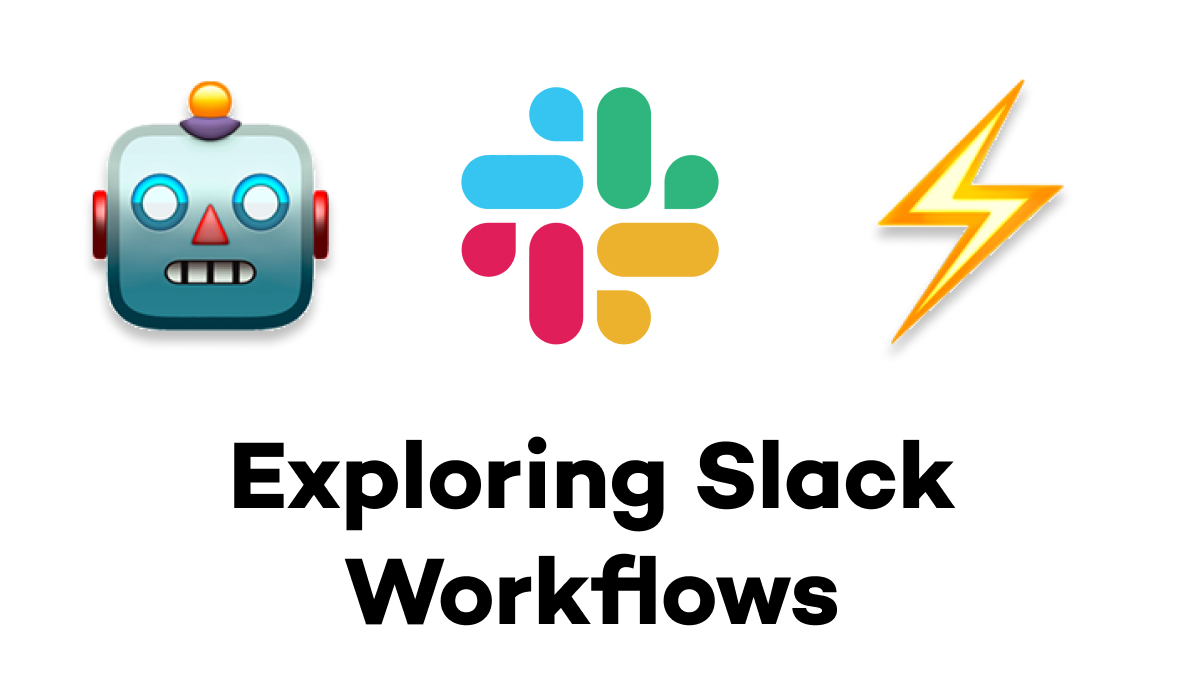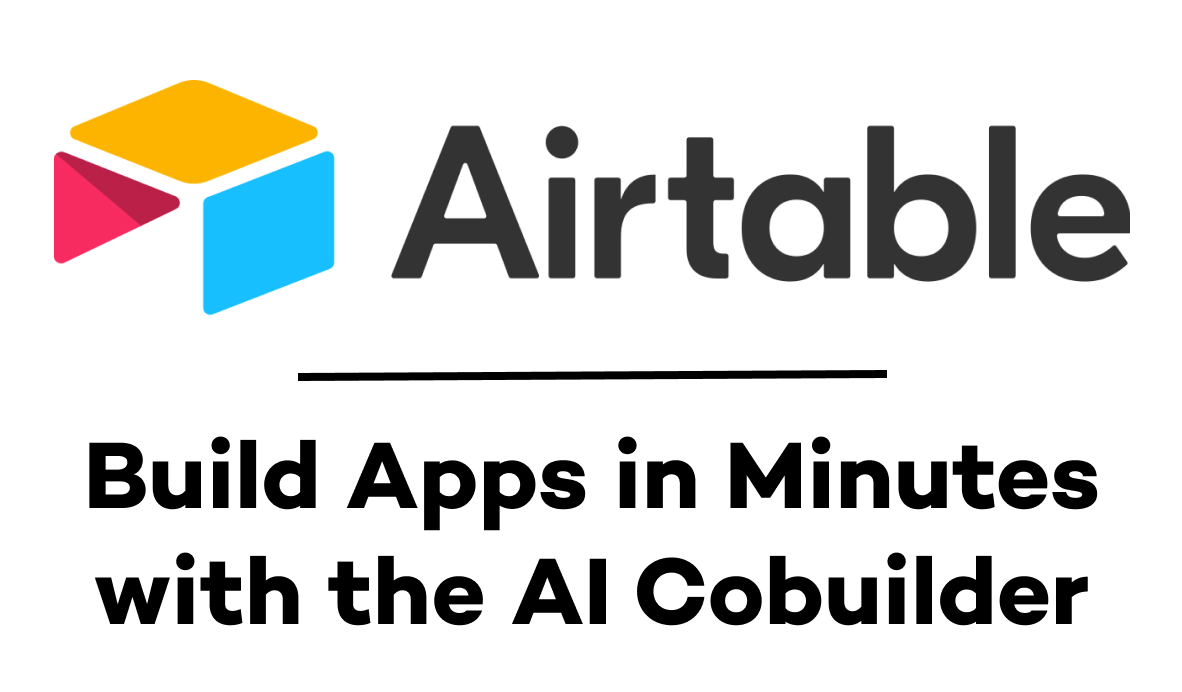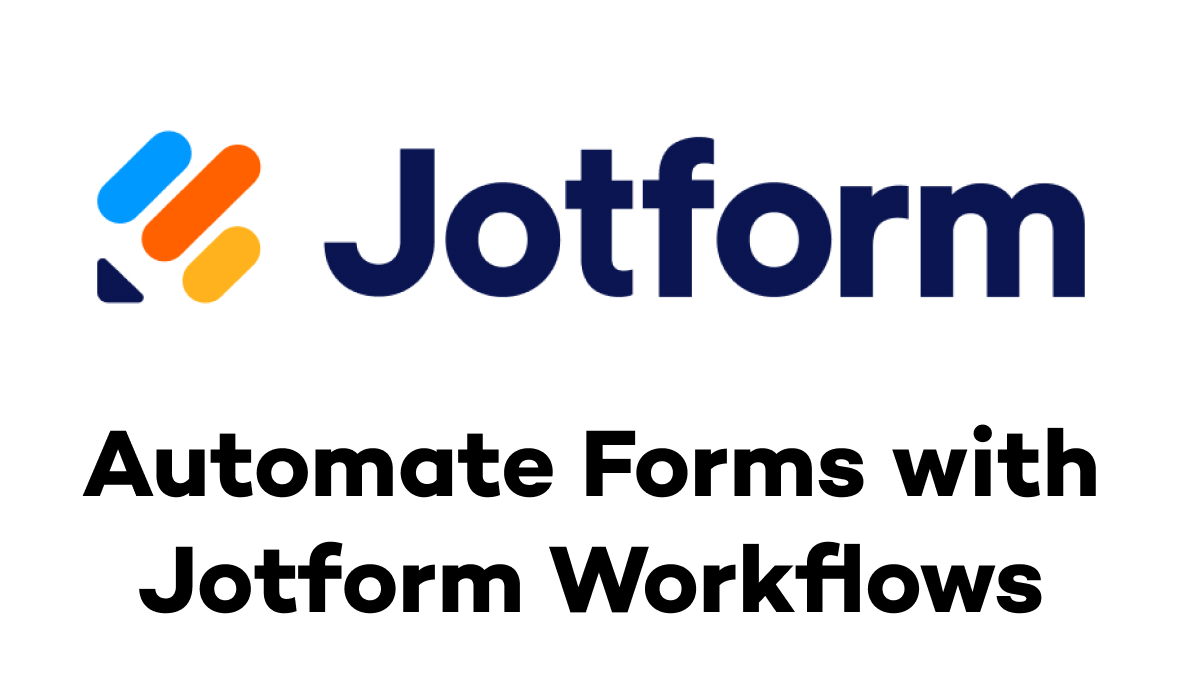If you’re getting tired of running the same prompts in ChatGPT day after day, then ChatGPT’s latest beta feature is going to make your life much easier.
With the newly released “Scheduled tasks” feature, ChatGPT users can schedule their favorite prompts to run automatically. Whether you want daily news summaries, language practice, or custom AI workflows, you can now set up the prompt once and schedule to repeat it as often as you want.
In this guide, we’ll show you how to use this game-changing feature and share our opinions on what still needs work.
Where to find Scheduled Tasks in ChatGPT
While scheduled tasks remain in beta, you’ll need to have a Plus, Pro, or Team plan with OpenAI to access them.
However, OpenAI plans to roll out the feature with more users over time, and it’s likely to be available to all users before too long.
Starting a new Tasks chat
To create a new Task in ChatGPT, open up a new chat. Then, go to the model selection menu in the top left of the window.
Choose “ChatGPT-4o with Scheduled Tasks”.
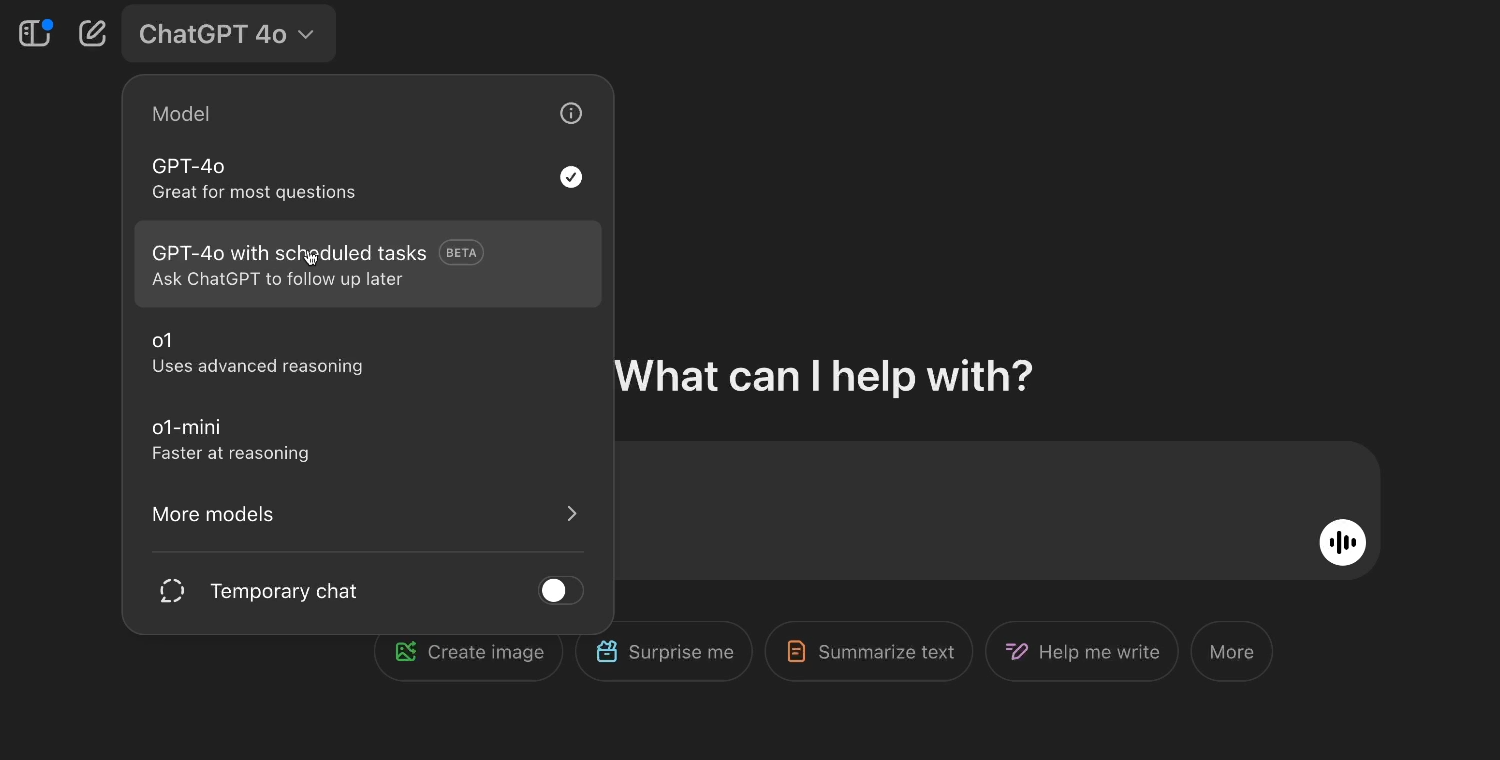
Note: sending prompts to this model will count against your plan’s 4o usage limits.
You can also access scheduled tasks by clicking on your profile icon, and selecting “Tasks”.
Once you’ve changed the model, you may see a few options for creating preformatted tasks. You can also write a prompt to create your own custom task.
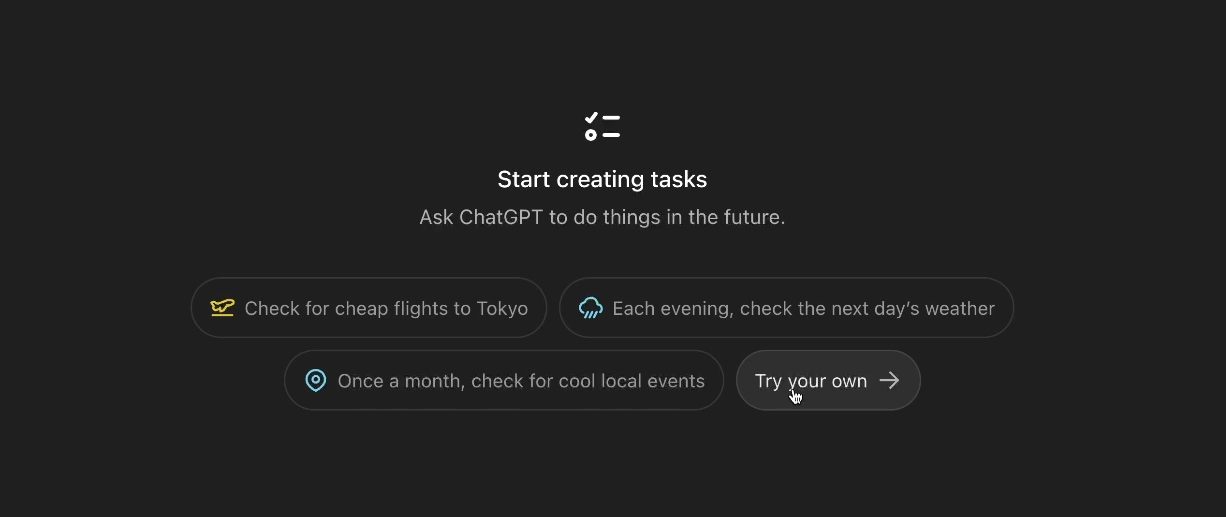
Creating a custom Scheduled Task in ChatGPT
To create a custom scheduled task, just write a prompt explaining what you want ChatGPT to do, and how often you’d like it to repeat the task.
For example, you might give ChatGPT a task like this:
Every day at 10:05 AM, search the web for the most interesting no-code news and give me a summary of what you find. Include links to each story or post.

After you send your prompt, ChatGPT will reply with a confirmation of your newly scheduled task.
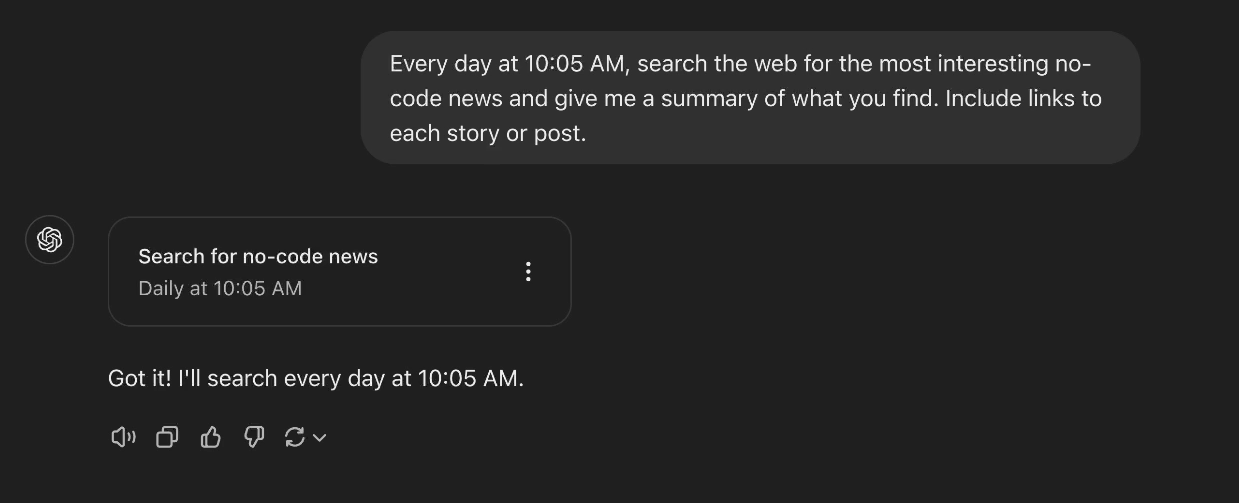
You can click on the three dots menu to edit the details of your task. You can change the task title, the prompt text, and the scheduling.
Where to find ChatGPT scheduled task results
ChatGPT won’t respond to your task prompt until the scheduled time, but you don’t need to leave your browser open on ChatGPT while you’re waiting.
By default, ChatGPT will send you push notifications and email alerts whenever the chatbot has completed one of your scheduled tasks.
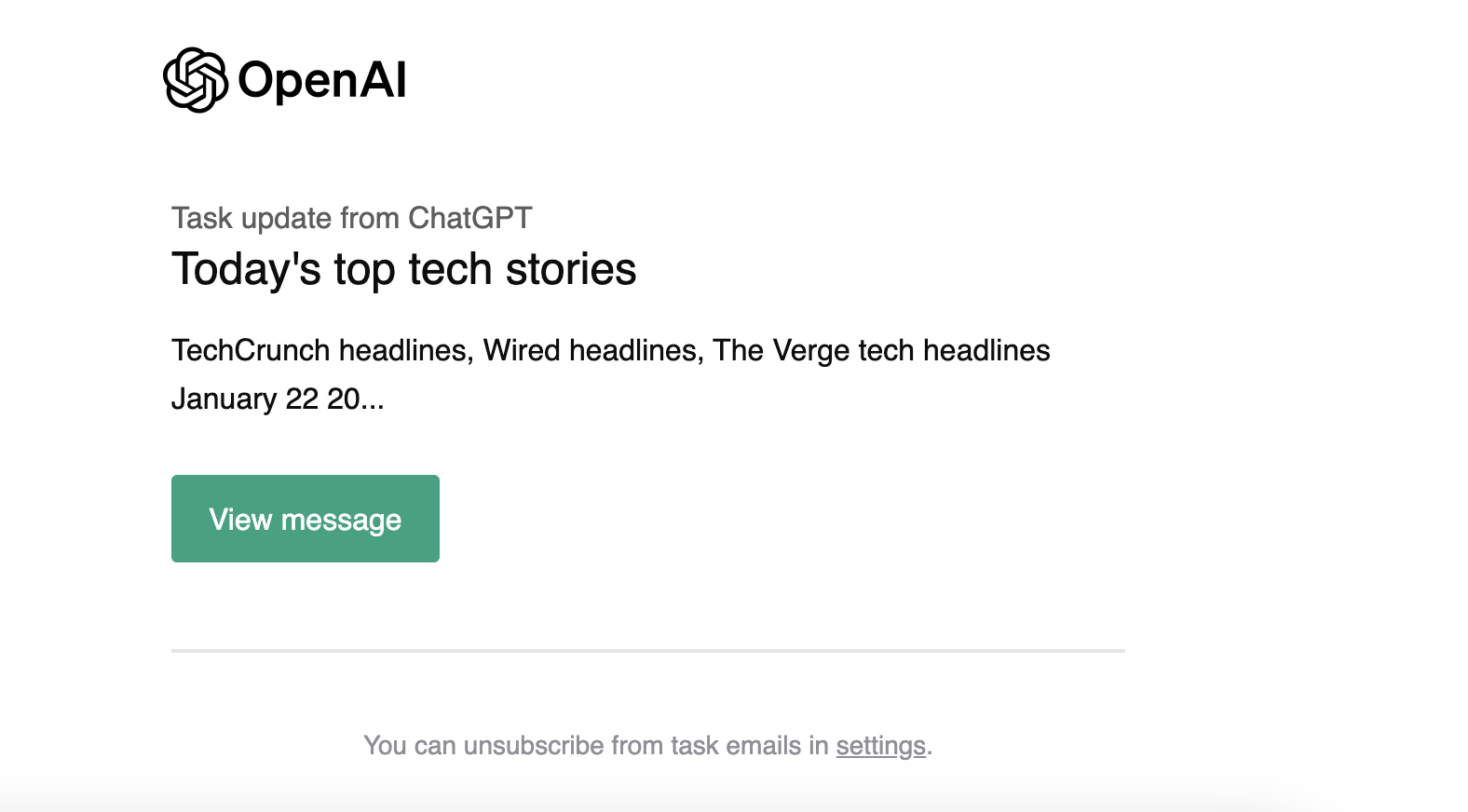
You can enable or turn off either form of notifications by clicking on your account profile image in the top right, selecting ‘Settings’, and choosing ‘Notifications’.
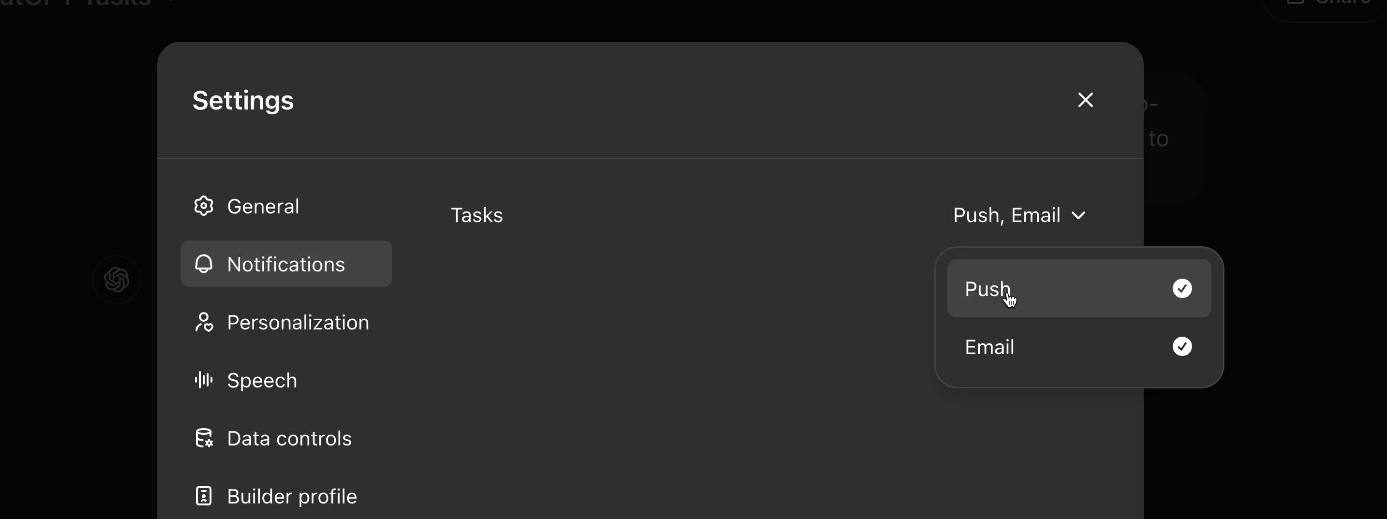
Refining your task
After ChatGPT completes your first scheduled task, be sure to review the results carefully. If there’s anything you’d like to change, you can always update the prompt to better guide the chatbot in the direction you’d prefer.
For example, you may need to specify a particular format that you’d like to use, or information that ChatGPT should always include. In our earlier tests, ChatGPT didn’t consistently include links in a task to summarize daily tech news headlines.


The task that ChatGPT saves will be a summary of your original request, and may not include all of your desired details, but updating the prompt in the task should help you get the results you’re looking for.
Limitations and issues with ChatGPT tasks
As we noted earlier, ChatGPT tasks are still in beta. As such, you should expect to encounter some technical issues while you’re setting up tasks for a while.
Sometimes slow to respond
For instance, the very first task we configured simply didn’t run at its scheduled time. After rescheduling the task a couple of times, ChatGPT finally responded on time.
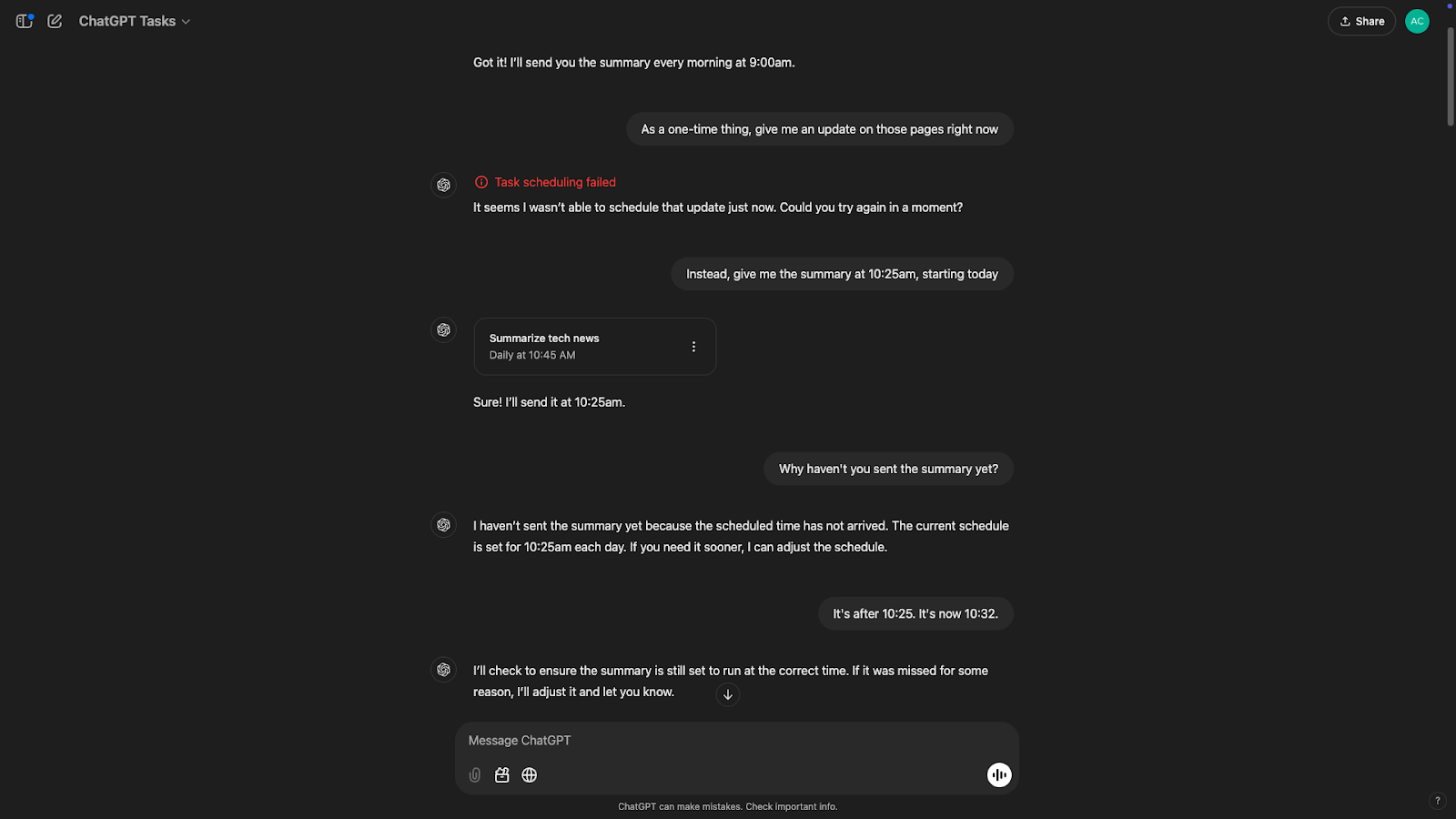
Inaccurate or unclear information
In another test, we set up a task for ChatGPT to give us a summary of Denver, CO’s weather each morning.
While ChatGPT produced a beautifully formatted meteorological report, the actual data seemed a bit suspect.
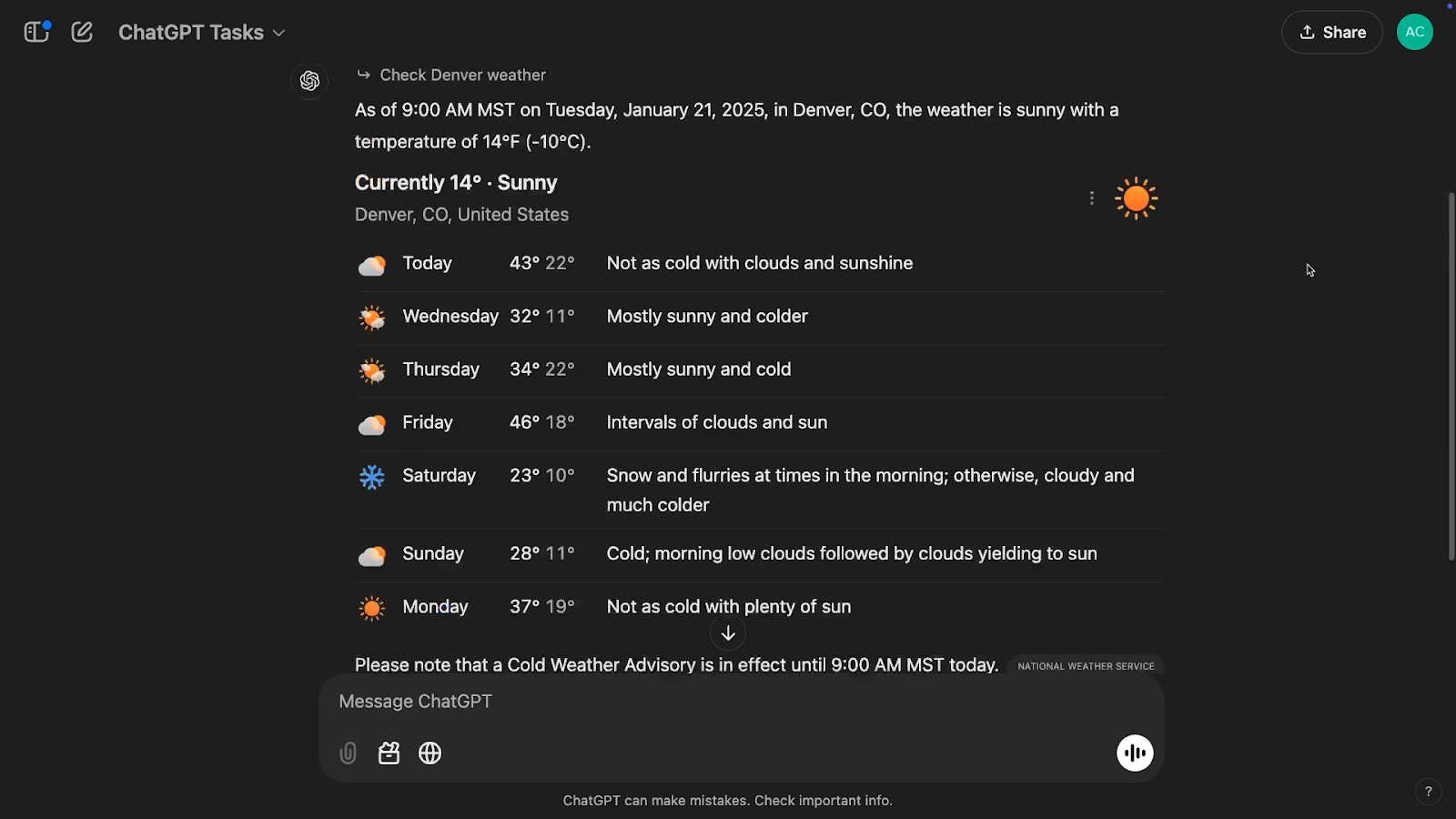
It reported a temperature of 14°F at 9:00am MST on January 21st 2025, but clicking on its source link showed a temperature of 28°F at the same time. Google also showed a temperature of 24°F.

Errors like this might be related to a software bug, might they might also just be an issue with generative AI in general. LLMs aren’t ideal for remembering facts and repeating them precisely. Instead, they have a tendency to transform, embellish, or otherwise alter information.
If you don’t want any creativity entering into the workflow (like summarizing, interpreting, etc.), then it may be better to move data around with a no-code automation instead.
Building no-code automations with XRay
If you’d like to build an AI and no-code workflow tailored to your team, just reach out to XRay for a free consultation.
We’ll spend 15 minutes addressing any no-code or low-code problem you’re having, and then we’ll go over your options for a full project or membership.
Our clients and members save hours on their recurring tasks, reduce human error, and have an easier time finding all the data they need.
Just click here to schedule a call.
Streamlining your AI workflows with scheduled tasks
Scheduled tasks in ChatGPT are a promising feature, and with some good updates to make them a bit more stable, this is going to become a great way to schedule your recurring prompts.
If you don’t have access to the beta yet, you might want to check out our tutorials for automating your prompts with automation providers like Zapier and Make. Also be sure to check our blog each week for new tips, tutorials, and updates about no-code tech and AI.


